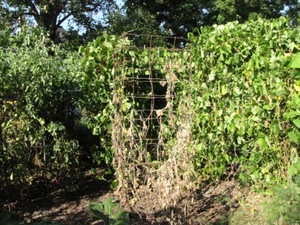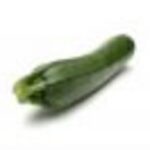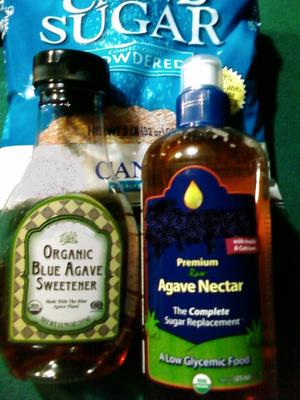Organic gardening yields me vegetables in great abundance for my family, to share with friends, or to freeze for later use. No matter how green my gardening practices are, I cannot grow vegetables without water. The drought of 2012 affected my vegetable garden, reducing the harvest of tomatoes and zucchini, which were the primary vegetables in my garden. An August 2012 New York Times article, “Hundred-Year Forecast: Drought,” offers the sobering prediction that drought “will be commonplace through the end of the century unless human-induced carbon emissions are significantly reduced.” Fearing the return severe drought growing seasons, I setout to find a way to grow vegetable plants using less water. In my research, one thing I learned about growing vegetables in drought conditions surprised me.
The value of water
During the hot months of the growing season, my vegetable garden needs up to 1 1/2 inches of water each week; this comes through rainfall or manual watering. Harvesting rainfall or melting snow from the roof is one method to augment garden water demands.
Ways to reduce water requirements
- Group plants with similar watering needs by planting vegetables in blocks (like two rows of two plants each, three rows of three plants each, etc.) instead of planting one long row.
- Place tall plants, like pole beans or corn, in a row on the west side of the garden to provide afternoon shade to shorter vegetable plants.
- Apply 2 to 4 inches of mulch, such as pine chips or leaf mold, to help retain moisture. Mulch also blocks sunlight from hitting the soil, to help prevent dry-out.
- Remove weeds as they occur. Weeds take valuable water from thirsty vegetable plants.
Short growing season
One of my measures to deal with drought conditions is to plant vegetables that have a short growing season. I used the chart from The Vegetable Garden website, looking for vegetables with the shortest maturity dates, which means less watering. My list includes bush beans, bush squash (I have only grown vine squash before), radish (which I grow in window boxes), and spinach. These short-growing season vegetables mean a second planting in mid-summer is possible depending on the level of drought. Eggplant, bell peppers, and tomatoes will also be on my list. Though these three vegetables take longer to mature, eggplant and bell pepper have done well for me in particularly dry summers.
Deep roots
Vegetable plants that set deep roots are more likely to survive drought once the plants have time to set their roots. Vegetables falling into this category include tomato, squash, and melon, plus one variety of zucchini called ‘Dark Star’ that is specifically bred for dry conditions. In the Colorado State University Extension article, “Water Conservation in the Vegetable Garden,” they say, “The tomato family has a lower water requirement than many vegetables and plants are often over-watered in the typical home garden.” Because of its high water content and because my tomato plants struggled during drought, seeing tomato as a low water requirement vegetable surprises me.
Proper watering techniques are critical: water deeply, which encourages roots to seek moisture further underground. My tomatoes did not produce well this drought season; the tomatoes were small, no greater than 2 inches in diameter and one of the four plants died. Perhaps I need to reexamine my watering techniques.
Sources: D. C. Sanders, “Vegetable Crop Irrigation,” North Carolina State University Cooperative Extensive Service; “Some vegetables require less water than others,” Oregon State University Extension Service.






